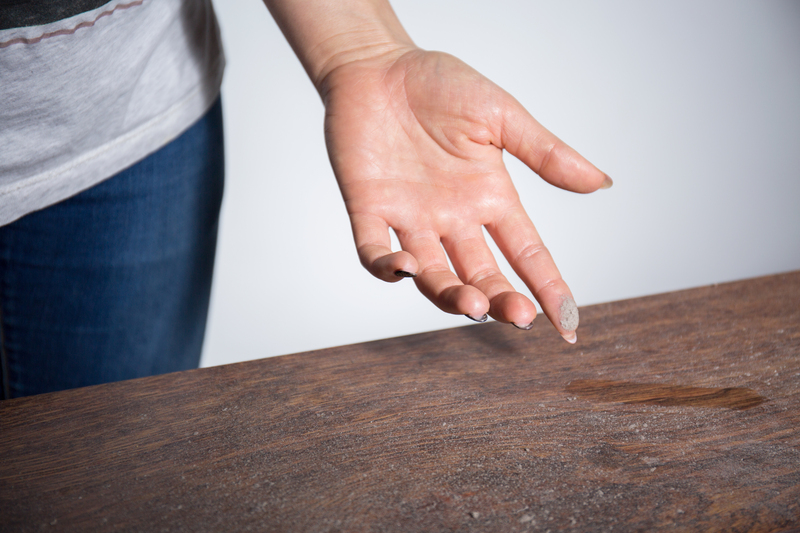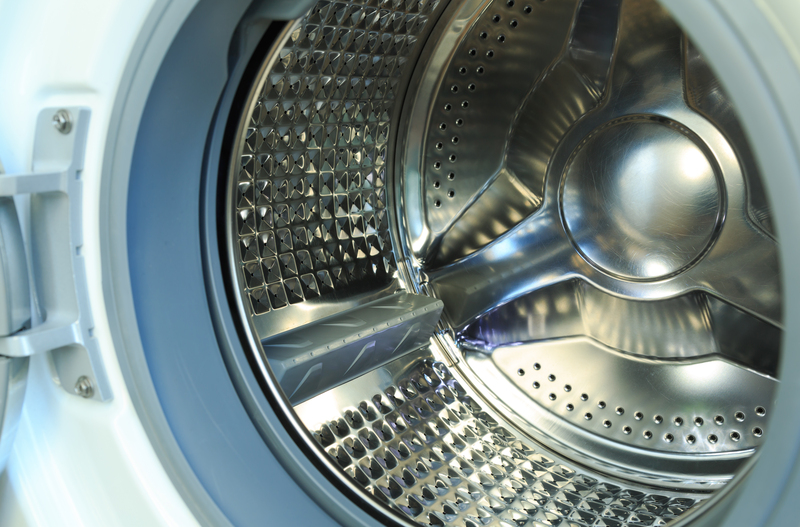Achieve a Mold-Free Bathroom with These Practical Tips
Posted on 04/06/2025
Achieve a Mold-Free Bathroom with These Practical Tips
A mold-free bathroom isn't just about aesthetics--it's vital for your family's health and the longevity of your home. Mold thrives in wet, humid environments, making bathrooms a favorite spot. However, with the right approach, you can effectively prevent mold and keep your bathroom pristine. In this comprehensive article, discover optimized, practical steps to prevent bathroom mold, maintain a healthy home, and enjoy a mold-free environment every day.

Why Is Preventing Mold in the Bathroom So Important?
Mold growth in bathrooms can have significant consequences. Not only does it cause unpleasant odors and unsightly stains, but it can also damage surfaces and even trigger health problems, especially for people with allergies, asthma, or weakened immune systems. Mold spores spread quickly in moist air, so it's essential to adopt strategies that keep moisture and humidity in check.
Let's dive into the most effective and practical tips for achieving a mold-free bathroom.
1. Improve Bathroom Ventilation
Why Ventilation is Key
Poor air circulation is the primary reason for bathroom mold growth. Mold spores require moisture to thrive, and steamy, unventilated bathrooms provide the ideal environment.
Practical Ways to Increase Ventilation
- Use an exhaust fan: Always run the bathroom fan during and for at least 20 minutes after showers to expel humid air.
- Open windows: If your bathroom has a window, open it during and after showers to let out steam and allow fresh air in.
- Keep doors open: Whenever possible, leave the bathroom door ajar to promote airflow and reduce moisture buildup.
2. Reduce Moisture Build-Up
How Moisture Encourages Mold
Mold spores are everywhere, but they only grow in damp conditions. The key to a mold-resistant bathroom is controlling and minimizing water accumulation.
Effective Tactics to Limit Moisture
- Wipe down tiles and glass: After every shower, use a squeegee or towel to dry walls, floors, shower doors, and mirrors.
- Fix leaky fixtures promptly: Even small leaks can lead to significant mold growth behind walls or under sink cabinets.
- Address dripping faucets: Repair any faucet that leaks or drips, as standing water provides an ideal environment for mold.
- Clean up spills immediately: Never leave water puddles on countertops, floors, or around the toilet.
3. Eliminate Mold Food Sources
What Does Mold Feed On?
Mold needs more than just moisture to grow; it thrives on organic materials commonly found in bathrooms. These include soap scum, hair, dead skin cells, and even some building materials.
Steps to Deny Mold Its Food
- Use mold-resistant paint: Apply specially formulated paint on bathroom walls and ceilings to inhibit mold growth.
- Choose non-porous materials: Use glass, metal, or ceramic for bathroom fixtures and surfaces whenever possible, as they don't absorb moisture.
- Clean regularly: Remove soap scum, hair, and debris from all surfaces weekly to starve potential mold colonies.
- Declutter the space: Limit what you keep in the bathroom. Bottles, loofahs, and unused toiletries can trap moisture and collect mold-friendly debris.
4. Keep Humidity in Check
High humidity is mold's best friend. Keeping your bathroom humidity below 50% is crucial for a mold-free bathroom.
How to Control Humidity
- Install a dehumidifier: For bathrooms with high humidity and poor ventilation, invest in a compact dehumidifier.
- Monitor humidity levels: A digital hygrometer can help you keep tabs on the bathroom's humidity, alerting you when levels rise.
- Use desiccants: Place moisture-absorbing crystals or silica gel in trouble spots, like under sinks or behind toilets.
- Hang towels and mats to dry: Do not leave wet towels or bath mats in a heap; hang them to air-dry and launder frequently.
5. Clean Grout and Caulk Regularly
Grout: A Hidden Mold Magnet
Grout lines between tiles and caulking around tubs and sinks are porous and retain moisture, making them ideal for mold growth.
How to Keep Grout Mold-Free
- Scrub grout weekly: Use a solution of equal parts vinegar and water, or a bathroom cleaner with mold-fighting ingredients.
- Seal grout annually: Apply a grout sealer every 12 months to create a protective barrier against moisture and mold spores.
- Replace damaged caulk: At the first sign of cracking or peeling, remove and replace caulk to keep moisture out.
6. Opt for Mold-Resistant Bathroom Materials
The Value of Mold-Resistant Products
Modern building materials can make a significant difference in your efforts to prevent mold in the bathroom. Choosing products specially designed to resist moisture reduces the risk of trouble down the road.
Mold-Resistant Options to Consider
- Mold-resistant drywall: Also known as green board, it's less porous and better for high-moisture zones.
- Mildew-resistant grout and caulk: These contain antimicrobial agents that prevent mold colonization.
- Moisture-proof flooring: Luxury vinyl, ceramic, or porcelain tile are ideal for bathroom floors and walls.
7. Adopt a Mold-Conscious Cleaning Routine
Make it a Habit
Frequent, thorough cleaning coupled with vigilance is your best defense for a mold-free bathroom. Mold can start growing in just 24-48 hours, so consistency is crucial.
Smart Cleaning Tips
- Clean shower curtains often: Machine wash fabric curtains and liners every month.
- Disinfect hard surfaces: Use an antifungal bathroom spray on sinks, counters, and tile at least once a week.
- Regularly empty bathroom trash: Damp items in trash cans provide a breeding ground for mold. Clean the bin monthly with soap and water.
- Dry bath toys and accessories: Drain and dry bath toys and soap dishes to deter mold.
8. Understand the Early Signs of Bathroom Mold
Spotting early indicators can help you tackle potential problems before they become large infestations.
- Black, green, or brown spots: These typically appear on grout, tile, and around windowsills.
- Musty odors: Persistent, unpleasant smells may signal hidden mold behind walls, under floors, or in drains.
- Warped surfaces: Bubbling paint, soft drywall, or stained caulk can point to unseen moisture and mold issues.
If you notice any of these signs, take action immediately to clean and address the source of moisture.
9. Handle Existing Mold Quickly and Safely
Steps to Remove Bathroom Mold
If you spot mold colonies, don't panic. Small patches can often be handled with simple cleaning methods:
- Wear gloves and a mask: Protect yourself from spores while cleaning.
- Use a mold remover: Choose commercial bathroom mold removers or use a mix of one part bleach to ten parts water.
- Scrub thoroughly: Clean the area with a stiff brush or sponge, rinse, and dry completely.
- Dispose of cleaning materials: Throw away cloths and sponges used for mold to prevent spreading spores.
Warning: If mold covers a large area (over 10 square feet), or if you suspect hidden growth behind walls or under flooring, consult a professional mold remediation service.
10. Regularly Inspect Hidden Mold-Prone Areas
Commonly Overlooked Spots
- Behind and under sinks
- Inside cabinets and vanities
- Around toilet bases and behind toilets
- Ceiling corners and light fixtures
- Near exhaust fans and ventilation grilles
Inspect these areas monthly, and address any moisture or discoloration you find straight away.
11. Educate Your Household for Ongoing Success
Teamwork Keeps Mold Away
Mold prevention is a team effort. Teach everyone in your home the basics of how to keep the bathroom mold-free:
- Always use and turn off the exhaust fan properly
- Promptly report or fix leaks and drips
- Wipe down surfaces after use, especially after bathing or showering
- Avoid leaving wet towels or clothing in the bathroom

Frequently Asked Questions About Mold-Free Bathrooms
Q: How often should I deep-clean my bathroom to prevent mold?
A: Perform a thorough cleaning at least once a week, focusing on grout, tile, and fixtures. Treat mildew-prone areas more often if you notice humidity or moisture issues.
Q: Do natural cleaning solutions work for bathroom mold?
A: Yes! Vinegar and baking soda are effective at killing mold on non-porous surfaces. For tough cases or porous materials, choose products designed specifically for mold removal.
Q: Can I totally eliminate bathroom mold forever?
A: While you can't prevent mold spores from entering your home, consistent cleaning, good ventilation, and moisture control can make your bathroom an inhospitable environment for mold, keeping it under control.
Conclusion: Enjoy a Lasting, Mold-Free Bathroom
Creating and maintaining a mold-free bathroom is completely achievable. By prioritizing ventilation, minimizing moisture buildup, using mold-resistant materials, and adopting vigilant cleaning routines, you'll discourage mold spore growth and protect your home and health. Share these tips with your family, make prevention a habit, and enjoy a sparkling, healthy bathroom all year long.
Remember, the best way to eliminate bathroom mold is to prevent it from starting in the first place. Use these expert, practical tips, and achieve a mold-free bathroom with confidence!




